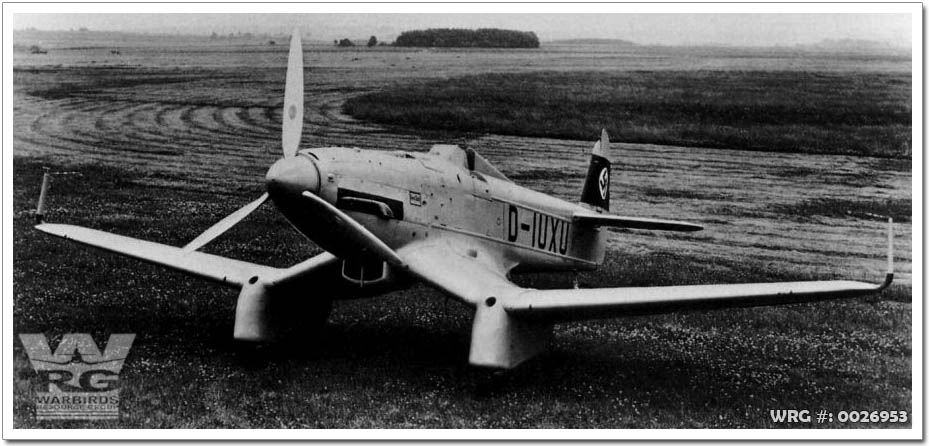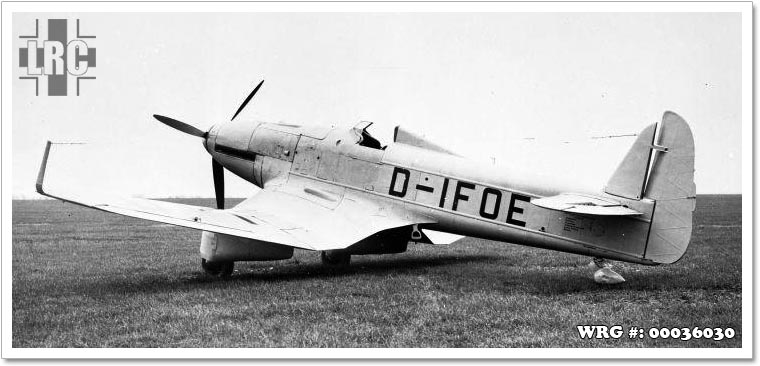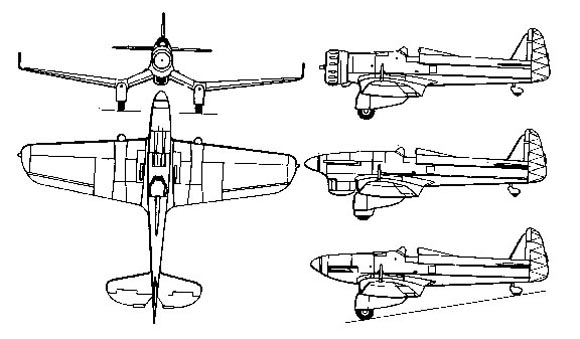Blohm und Voss Ha 137
Hamburger had already designed a biplane trainer of no particular distinction, the Ha 135 under their first designer, Reinhold Mewes. Mewes then left to join another small company, Fieseler. In his place, Hamburger hired Richard Vogt, who had been working for a decade with Kawasaki Aircraft and was looking to return to Germany. Before leaving Japan, Vogt had been working on a new design for building wing spars, using a single chrome-plated steel tube (often square or rectangular) that formed both the middle portion of the wing and also served as a primary fuel tank.

Blohm und Voss Ha 137
When tenders were offered for the dive bomber program in 1934, Hamburger was not even invited to submit an entry. Nevertheless, Vogt was convinced that his new construction method would deliver a plane of the required strength with better performance than traditional designs, so he started work on Projekt 6 and submitted it anyway. He also started work on a more conventional biplane design as Projekt 7.
Projekt 6 was essentially a scaled-up version of Vogt's last design at Kawasaki, the Kawasaki Ki-5. Built entirely of metal and using a semi-monocoque fuselage, the design looked more like a fighter - specifically like the Heinkel He 112 - than a dive bomber. The wing used the tubular spar system, the inner portion of which was sealed as a fuel tank holding 270 L (70 US gal). The design used fixed landing gear, so in order to reduce their length, and thus the drag, the wings featured a sharp inverted gull wing bend at about ¼ span. The wheels were mounted on two shock absorbers each, so the fairing around the gear was large enough to allow the mounting of a 7.92 mm MG 17 machine gun for testing, and a 20 mm MG FF cannon if required. Two additional 7.92 mm MG 17s were mounted in the fuselage decking above the engine.
Engines proved to be more of a problem. Vogt originally submitted the design mounting the new BMW XV. The future of this engine was in doubt, however, and the Reich Air Ministry (RLM) asked for the design to be re-submitted with the 485 kW (650 hp) Pratt & Whitney Hornet radial engine, then starting licensed production in Germany as the BMW 132. Vogt's team then modified the design to use the Hornet as Projekt 6a, or alternately the Rolls-Royce Kestrel as Projekt 6b. The RLM found the resulting design interesting enough to fund construction of three prototypes.
The Hornet-powered Ha 137 V1 first flew in April 1935, followed the next month by V2, and both were shipped to Travemünde that summer. It quickly became apparent that the Hornet engine was so large that the visibility during diving was greatly affected, and the RLM then suggested that the third prototype be completed as a 6b with the Kestrel, delaying it slightly to change the engine mounts and add a somewhat odd-looking radiator under the nose. By this point the definitive requirements for the dive bomber program had been drawn up, taken directly from Junkers' description of their own entry which had already been selected to win, calling for a two-seater arrangement. The Ha 137 was thus excluded, although realistically no other design had a chance to win anyway.

Blohm und Voss Ha 137
The RLM was nevertheless interested enough in the design to order another three prototypes with the new Junkers Jumo 210 engine. The radial-powered versions retroactively became known as the Ha 137A, while the inline powered versions became the Ha 137B. Further testing continued during 1936, and the prototypes also took part in the "doomed" dive bomber contest in June 1936, but the design was still being considered for the close support role instead of dive bomber. However, when Ernst Udet took over the T-Amt later that year, he considered the close support role unnecessary, and informed Hamburger that they should stop work on the design.
The three Jumo-powered prototypes were built anyway during 1936 and 1937, eventually being used as testbed aircraft at Blohm & Voss. V1 was destroyed in testing during 1935 when the ammunition for its guns exploded, and V6, D-IDTE, crashed in July 1937, but the remaining four were used for years until a lack of spare parts for their engines eventually grounded them.
Vogt had also done some work on a navalized version of the design as Projekt 11; however, the additional weight of the landing equipment, or floats as in the 11b, dramatically reduced range and made the design uninteresting.
SPECIFICATIONS:
Type: Dive bomber and close-support
Origin: Hamburger Flugzeugbau GmbH
Models: V1 to V6
First Flight: April 1935
Service Delivery: None, prototypes only
Final Delivery: N/A
Powerplant:
Dimensions:
Weights:
Performance:
Armament:
Bomb load:


Blohm und Voss Ha 137

Blohm und Voss Ha 137
SPECIFICATIONS:
Type: Dive bomber and close-support
Origin: Hamburger Flugzeugbau GmbH
Models: V1 to V6
First Flight: April 1935
Service Delivery: None, prototypes only
Final Delivery: N/A
Powerplant:
- Ha 137V1: 720hp BMW 132 Hornet
- Ha 137V2-V6: 610hp Jumo 210
Dimensions:
- Wing span: 11.15m (36 ft. 7 in.)
- Length: 9.46m (31 ft. 0.75 in.)
- Height: 2.8m (9 ft. 2.25 in.)
- Wing Surface Area: 22.7 m² (244.3 ft²)
Weights:
- Empty: 1,814kg (4,000 lbs.)
- Maximum: 2,415kg (5,324 lbs.)
Performance:
- Maximum Speed (V4): 330kph (205 mph)
- Initial climb: N/A
- Service Ceiling: N/A
- Range: 360 Miles (580km)
Armament:
- 2 x MG17 7.92mm machine guns in fuselage.
- 2 x MG17 7.92mm machine guns or 20mm MG FF in top of landing gear trousers.
Bomb load:
- 4 x 110 lb (50kg) bombs on wing racks.

Sources:
Gunston, Bill & Wood, Tony - Hitler's Luftwaffe , 1977, Salamander
Books Ltd., London
, 1977, Salamander
Books Ltd., London
Wikipedia - Blohm und Voss Ha 137
Gunston, Bill & Wood, Tony - Hitler's Luftwaffe
Wikipedia - Blohm und Voss Ha 137






